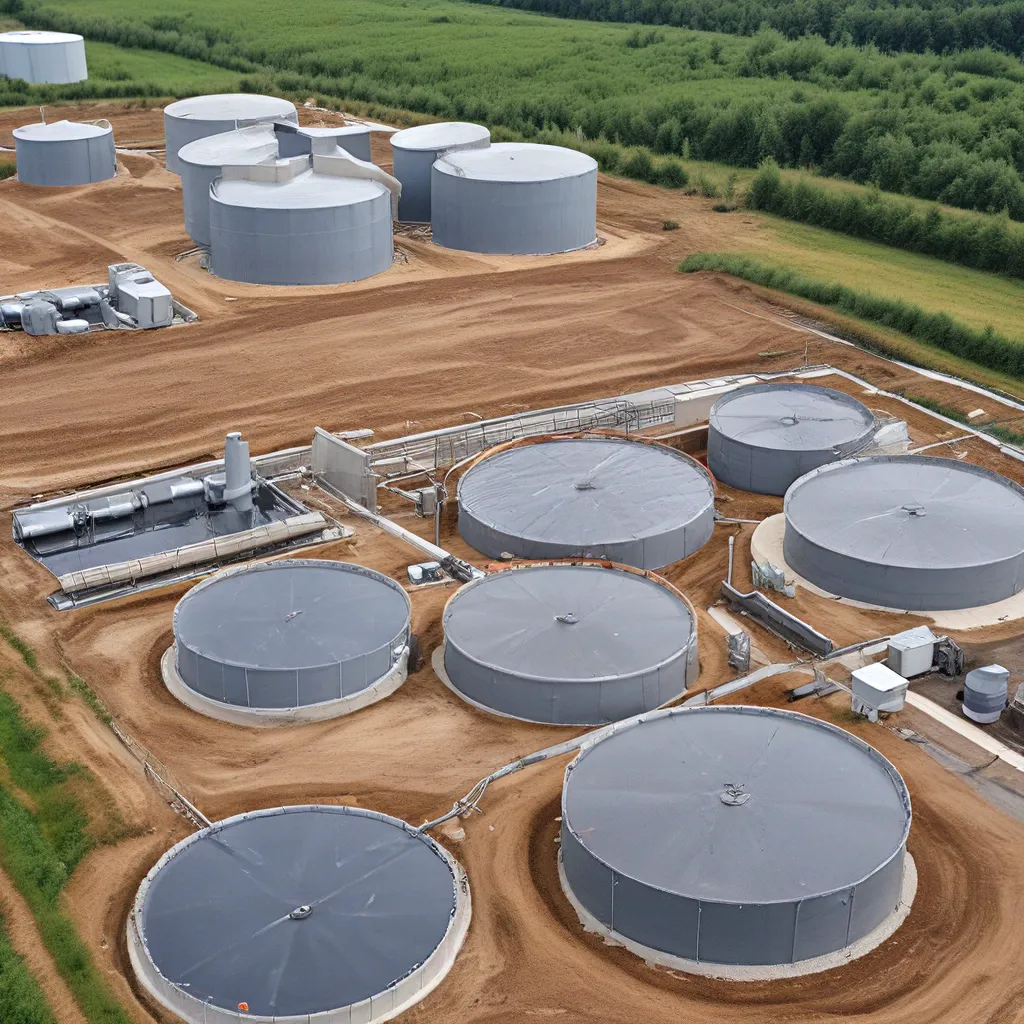
As an environmental enthusiast, I’ve always been fascinated by the incredible potential of wastewater treatment facilities to not only clean our water, but also generate clean, renewable energy. It’s a little-known secret that these unsung heroes of the water infrastructure world are quietly revolutionizing the way we think about waste and resource recovery.
The Biogas Breakthrough
Let me tell you about a recent discovery that blew my mind. Did you know that the biogas produced during the wastewater treatment process can be harnessed and used to generate electricity and heat? That’s right – this methane-rich byproduct, which was once simply flared off, is now being captured and transformed into a valuable energy source.
I was intrigued when I learned about the Western Lake Superior Sanitary District (WLSSD) and their innovative Combined Heat and Power (CHP) energy project. WLSSD is using the biogas from their regional wastewater plant to generate more than a third of the electricity needed to power their entire treatment facility. And get this – they’re planning to reclaim additional wastes to increase biogas production even further.
What’s even more impressive is that WLSSD is investing a whopping $249 million over 5 years to make this happen. But the payoff is huge – they’re on track to cut their electricity purchases in half or more, effectively moving towards energy neutrality. Can you believe it? A wastewater treatment plant becoming energy self-sufficient? It’s like something straight out of a science fiction movie!
Tapping Into Excess Capacity
But WLSSD isn’t the only facility harnessing the power of biogas. According to the U.S. Environmental Protection Agency (EPA), water resource recovery facilities (WRRFs) across the country are tapping into their excess capacity and co-digesting food waste to boost biogas production.
These facilities are discovering that by adding fats, oils, and grease (FOG) or other food waste byproducts to their digesters, they can significantly increase the amount of biogas generated. And as energy prices rise and regulations tighten, more and more WRRFs are seeing the value in becoming energy producers rather than just energy consumers.
Just imagine – wastewater treatment plants that are energy positive, generating more power than they need and potentially even selling the excess back to the grid. It’s a win-win for the environment, the utilities, and the communities they serve.
The Path to Energy Neutrality
Of course, this biogas revolution isn’t happening overnight. It takes strategic planning, significant investment, and a willingness to think outside the traditional wastewater treatment box. But the payoff is worth it, both in terms of environmental impact and financial savings.
Alpha Wastewater, for example, has been at the forefront of this movement, helping utilities across the country explore the possibilities of biogas and co-digestion. Their experts work closely with WRRFs to conduct feasibility studies, secure funding, and implement the necessary infrastructure to turn wastewater into a valuable energy resource.
The road to energy neutrality may not be a smooth one, but it’s a journey worth taking. As I learned more about the incredible potential of biogas, I couldn’t help but feel a sense of excitement and hope for the future of our water infrastructure. Who knew that the humble wastewater treatment plant could be the key to a more sustainable, energy-efficient future?
Ongoing Innovations and Future Potential
Of course, the biogas story doesn’t end there. Researchers and engineers are constantly exploring new ways to maximize the energy potential of wastewater treatment. Some are experimenting with advanced pre-treatment techniques to enhance biogas yields, while others are investigating the use of microbial fuel cells to directly convert organic matter into electricity.
It’s an exciting time of innovation and discovery, and I can’t wait to see what the future holds. Who knows – maybe one day, wastewater treatment plants will be the primary energy producers in our communities, powering our homes and businesses with the very waste we’ve been trying to get rid of all along.
But for now, I’m just grateful to have learned about the incredible work happening at facilities like WLSSD. It’s a powerful reminder that waste is never truly waste – it’s just a resource waiting to be harnessed. And with the right vision and determination, we can turn our wastewater treatment plants into engines of sustainable energy production, propelling us towards a more energy-neutral and environmentally responsible future.